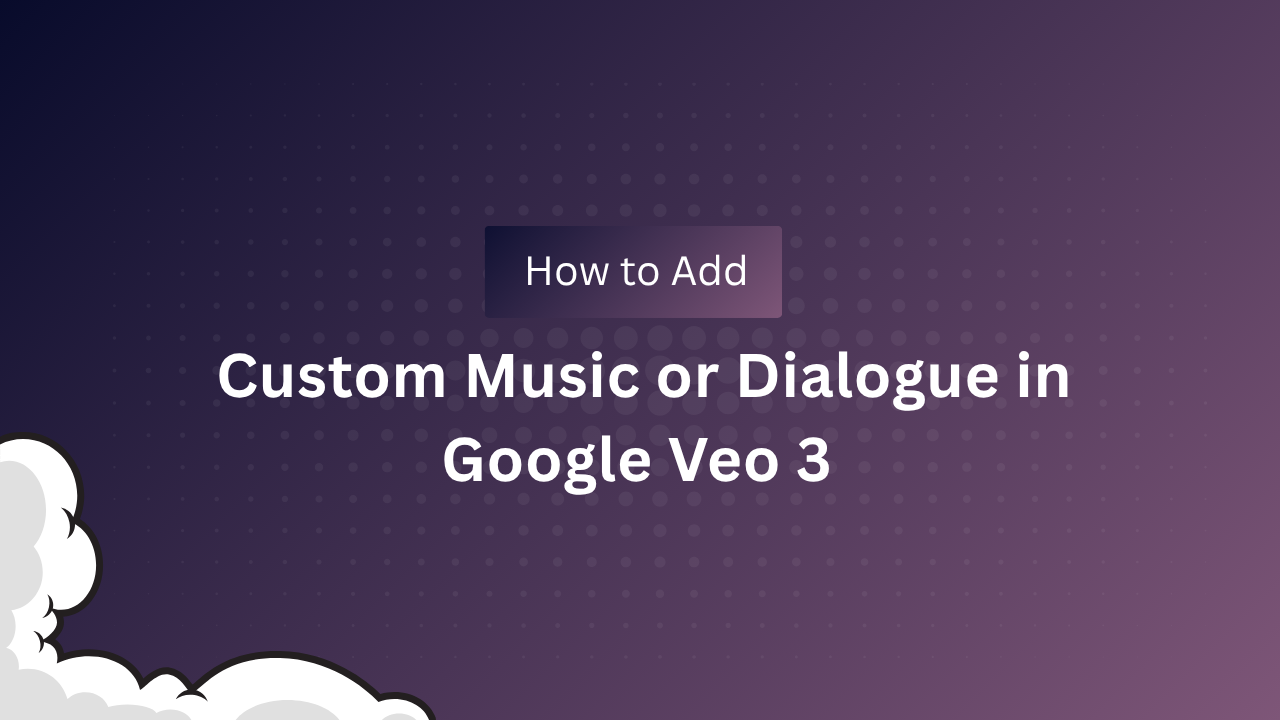How to Add Custom Music or Dialogue in Veo 3: A Complete Guide
Introduction
Google Veo 3 has rapidly become one of the most powerful AI video generation tools available in 2025. Its ability to create stunning, cinematic videos from simple text prompts, complete with native audio like music, sound effects, and dialogue, offers creators unprecedented creative freedom. However, many users want to go beyond Veo 3’s built-in audio options and add their own custom music or dialogue to truly personalize their videos. This guide will walk you through how to effectively add custom audio elements to your Veo 3 videos, whether you’re a content creator, marketer, educator, or freelancer.
Understanding Veo 3’s Native Audio Capabilities
Before diving into custom audio, it’s important to understand Veo 3’s native audio features. Veo 3 can generate synchronized music, sound effects, and even character dialogue directly from your prompts. It supports over 40 multilingual voices with natural lip-syncing, which makes it easy to create videos with built-in narration or conversations. However, the native audio is generated based on your text prompt and style instructions, which means it might not always perfectly match your vision or brand’s unique sound.
Why Add Custom Music or Dialogue?
- Brand Consistency: Use your own music tracks or voice actors to maintain a consistent brand identity.
- Creative Control: Customize tone, pacing, and emotion beyond AI-generated audio.
- Licensing and Rights: Use licensed or royalty-free music you own or have permission to use.
- Higher Production Value: Professionally recorded dialogue or music can elevate your videos.
Step-by-Step Guide to Adding Custom Music or Dialogue in Veo 3
-
Generate Your Video with Veo 3
Start by creating your video in Veo 3 as usual. Use detailed prompts to get the visuals and native audio close to your desired outcome.
Choose your preferred style and length (typically 8–60 seconds).
Download the video with the native audio track.
-
Extract or Mute Native Audio (Optional)
If you want to completely replace Veo 3’s audio, you can mute or remove the native audio track using video editing software.
Tools like Adobe Premiere Pro, DaVinci Resolve, or free editors like CapCut allow you to detach or mute audio tracks easily.
-
Prepare Your Custom Audio
For music: Use royalty-free or licensed tracks that fit your video’s mood and pacing.
For dialogue: Record your own voiceover or hire voice actors. Ensure clear, high-quality recordings.
Edit and export audio files in standard formats like MP3 or WAV.
-
Combine Custom Audio with Veo 3 Video
Import your Veo 3 video (muted if necessary) and your custom audio into your video editor.
Sync the audio with the video timeline. Adjust timing to match scene changes or lip movements if dialogue is involved.
Add fades, volume adjustments, or effects to blend audio naturally.
-
Export the Final Video
Render your video in the desired resolution and format (MP4 is common for social media and YouTube).
Review the final output to ensure audio sync and quality meet your standards.
Tips for Writing Prompts to Complement Custom Audio
- When planning to add custom dialogue, keep Veo 3’s native audio minimal or silent by specifying in your prompt: “No dialogue, focus on visuals and background ambiance.”
- For music, describe the mood and tempo to help Veo 3 generate visuals that match your custom soundtrack.
- Use camera movement and scene detail prompts to align with your audio’s emotional beats.
Best Tools to Use Alongside Veo 3 for Audio Editing
- CapCut: User-friendly, free, great for quick audio-video syncing and captioning.
- DaVinci Resolve: Professional-grade editing with advanced audio controls.
- Adobe Premiere Pro: Industry standard for detailed audio mixing and effects.
- Audacity: Free audio editor to clean or enhance your dialogue or music tracks.
- Descript: Useful for editing voiceover and generating transcripts.
Common Challenges and How to Overcome Them
- Lip-sync mismatch: If your custom dialogue doesn’t perfectly match Veo 3’s generated lip movements, consider simplifying dialogue or using subtitles.
- Audio length differences: Adjust clip length or audio speed slightly to ensure sync.
- Volume balancing: Use audio ducking or fade-ins/fade-outs to balance dialogue and background music.
- File compatibility: Always export audio and video in compatible formats to avoid import issues.
Real-World Example
Imagine you’re creating a product promo video. You generate a sleek, cinematic video of the product using Veo 3 with minimal native audio. Then, you add a professionally recorded voiceover explaining product features and a licensed upbeat music track in post-production. This approach combines Veo 3’s visual power with your unique audio branding, resulting in a polished, engaging video perfect for marketing campaigns.
Conclusion
Adding custom music or dialogue to your Google Veo 3 videos unlocks a new level of creative control and professionalism. While Veo 3’s native audio is impressive, supplementing or replacing it with your own audio assets allows you to tailor videos perfectly to your brand, audience, and message. By following this guide’s steps and tips, you can seamlessly integrate custom audio, enhancing your AI-generated videos and standing out in a crowded digital landscape.
Ready to elevate your Veo 3 creations? Start experimenting with custom audio today and watch your videos come alive like never before!

